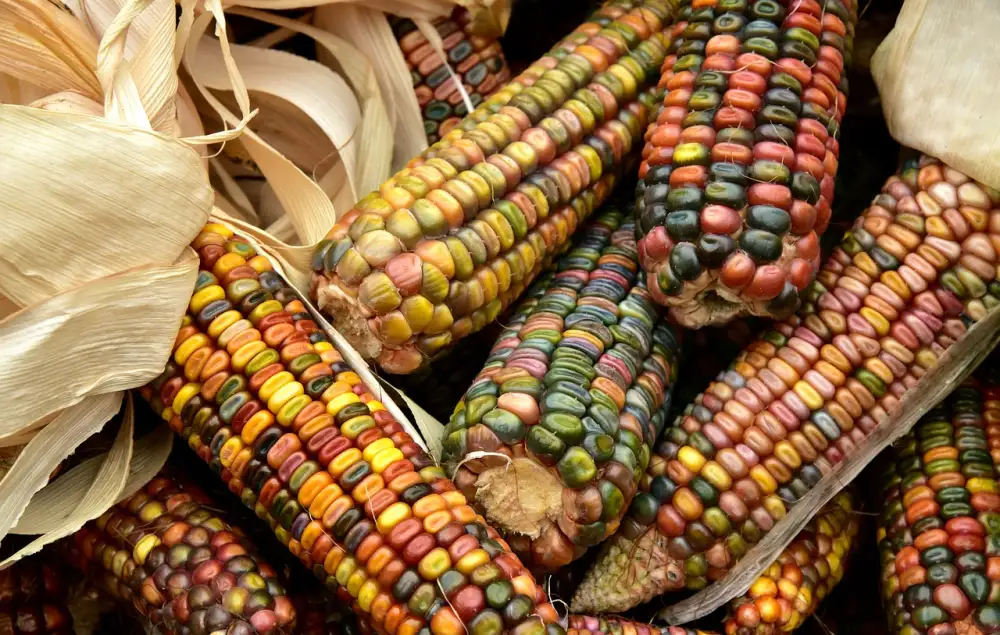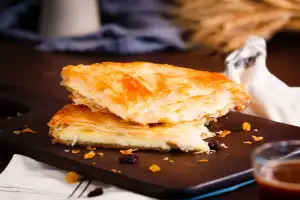Nixtamalization: Unveiling the Secrets of Maize Preparation for Authentic Global Cuisine

- History of Nixtamalization: Tracing its Origins and Cultural Significance
- The Science Behind Nixtamalization: Exploring the Chemical Changes in Maize
- The Nixtamalization Process: Step-by-Step Guide to Preparing Maize for Consumption
- Benefits of Nixtamalization: Nutritional and Flavor Advantages of the Traditional Method
- Nixtamalization in Modern Cuisine: How Chefs and Food Enthusiasts Embrace this Ancient Technique
- Exploring Nixtamalization Around the World: Regional Variations and Culinary Applications
Nixtamalization is a traditional maize preparation technique that has been used for centuries in various cultures around the world. This process involves soaking and cooking maize kernels in an alkaline solution, typically made from water and lime or wood ash. The purpose of nixtamalization is to soften the maize, remove the outer hull, and increase its nutritional value. This ancient method plays a crucial role in creating authentic global cuisine by unlocking the flavors and textures of maize. Let's delve deeper into the secrets of nixtamalization and discover its significance in culinary traditions worldwide.
History of Nixtamalization: Tracing its Origins and Cultural Significance
Nixtamalization, the traditional maize preparation technique, has a rich history that dates back thousands of years. Its origins can be traced to ancient Mesoamerican civilizations such as the Aztecs and Mayans. These cultures recognized the importance of nixtamalization in unlocking the nutritional potential of maize.
Nixtamalization played a vital role in their diets, as it not only made maize easier to digest but also increased its nutrient content. The process involves soaking dried maize kernels in an alkaline solution, usually made from water and calcium hydroxide or wood ash. This causes the outer hull of the kernel to soften and allows for easier removal.
The cultural significance of nixtamalization goes beyond its practical benefits. In Mesoamerican societies, corn was considered a sacred crop and central to their way of life. Nixtamalization was seen as a way to honor and respect this staple food by enhancing its flavor, texture, and nutritional value.
As time went on, nixtamalization spread throughout Central and South America, becoming an integral part of various cuisines. It became synonymous with dishes like tortillas, tamales, and pozole – all iconic foods that continue to be enjoyed today.
Understanding the history of nixtamalization allows us to appreciate its cultural significance and the wisdom of ancient civilizations in harnessing the full potential of maize.
The Science Behind Nixtamalization: Exploring the Chemical Changes in Maize
Nixtamalization is not just a traditional method of maize preparation; it is also a fascinating scientific process. When maize is soaked in an alkaline solution, such as lime water, the chemical composition of the kernels undergoes significant changes. The alkaline solution breaks down the tough outer layer of the maize, making it easier to remove. This process, known as dehulling, also helps release essential nutrients like niacin and amino acids. Additionally, nixtamalization increases the availability of calcium and iron in maize, enhancing its nutritional value. The alkaline treatment also alters the texture and flavor of the maize, giving it a distinctive taste that is crucial for authentic global cuisine. Understanding these chemical changes sheds light on why nixtamalization has been an integral part of culinary traditions for centuries.
The Nixtamalization Process: Step-by-Step Guide to Preparing Maize for Consumption
1. Start by selecting dried maize kernels, preferably dent corn or field corn, as they have a higher starch content.
2. Rinse the maize kernels thoroughly to remove any dirt or debris.
3. In a large pot, add water and bring it to a boil.
4. Add the rinsed maize kernels to the boiling water and let them cook for about 10 minutes.
5. After 10 minutes, remove the pot from heat and let it sit overnight, allowing the maize to soak in the water.
6. The next day, drain the water and rinse the maize again to remove any remaining impurities.
7. Now comes the crucial step of nixtamalization - cook the soaked maize with an alkaline solution like calcium hydroxide (lime) or wood ash.
8. In a separate pot, dissolve the alkaline solution in water and bring it to a simmer.
9. Add the soaked maize kernels to the simmering alkaline solution and cook for about an hour until they become soft and pliable.
10. Once cooked, drain off the alkaline solution and rinse the maize thoroughly with water again.
11. At this point, you can either use the nixtamalized maize immediately or let it dry before grinding it into masa dough for making tortillas, tamales, or other traditional dishes.
Remember that nixtamalization is not just a cooking technique but also an art form that requires time and patience to achieve optimal results in flavor and texture.
Benefits of Nixtamalization: Nutritional and Flavor Advantages of the Traditional Method
Nixtamalization offers numerous benefits, both in terms of nutrition and flavor. Firstly, this traditional method enhances the nutritional value of maize by increasing the availability of essential nutrients such as niacin, calcium, and amino acids. The process also improves the digestibility of maize, making it easier for our bodies to absorb these nutrients. Additionally, nixtamalization imparts a unique flavor profile to the maize, resulting in a rich and earthy taste that adds depth to various dishes. By preserving the cultural heritage and enhancing the nutritional quality of maize, nixtamalization continues to be an invaluable technique in global gastronomy.
Nixtamalization in Modern Cuisine: How Chefs and Food Enthusiasts Embrace this Ancient Technique
In modern cuisine, chefs and food enthusiasts have embraced the ancient technique of nixtamalization to enhance the flavors and textures of their dishes. By utilizing this traditional method, they are able to create authentic and unique culinary experiences.
Chefs around the world have recognized the value of nixtamalization in elevating their dishes. They appreciate how it transforms maize into a versatile ingredient that can be used in a variety of recipes. From tortillas and tamales to soups and stews, nixtamalized maize adds depth and complexity to these dishes.
Food enthusiasts have also embraced nixtamalization in their own kitchens. They understand that by taking the time to prepare maize using this ancient technique, they can unlock its full potential. The resulting flavors are richer, the texture is more satisfying, and the nutritional benefits are maximized.
Moreover, nixtamalization allows for creative experimentation in modern cuisine. Chefs and home cooks alike have started incorporating nixtamalized maize into non-traditional dishes such as salads, sandwiches, and even desserts. This innovative approach showcases the versatility of this ancient technique.
By embracing nixtamalization in modern cuisine, chefs and food enthusiasts pay homage to the rich history and cultural significance of this traditional method. They understand that by preserving these age-old techniques, they contribute to the preservation of culinary heritage while creating memorable dining experiences for their patrons or loved ones at home.
Exploring Nixtamalization Around the World: Regional Variations and Culinary Applications
Nixtamalization is not limited to one specific region or culture. It has been embraced by various communities around the world, each adding their own unique twist to the traditional technique.
In Mexico, nixtamalization is deeply ingrained in the culinary traditions. The resulting nixtamal is used to make tortillas, tamales, and pozole, which are staple dishes in Mexican cuisine. The process gives these dishes a distinct flavor and texture that cannot be replicated with commercially processed maize.
In Central America, particularly in countries like Guatemala and Honduras, nixtamalization is used to prepare masa dough for making pupusas and tamales. These dishes are an integral part of the local food culture and are enjoyed by people of all ages.
In South America, countries like Peru and Bolivia have their own variations of nixtamalization. In Peru, it is used to make a traditional dish called mote, which is made from boiled corn kernels. In Bolivia, nixtamalized corn is used to make a popular drink called chicha.
Even outside of the Americas, nixtamalization has found its place in global gastronomy. In Africa, countries like Nigeria and Ghana use similar techniques to prepare maize for dishes like banku and kenkey. These fermented maize dishes are enjoyed with various stews and sauces.
In Asia, specifically in parts of India and Southeast Asia, nixtamalization is used for preparing dishes like hominy curry and cornbread. The process adds depth of flavor to these dishes while also enhancing their nutritional value.
The versatility of nixtamalization can be seen across different regions and cuisines worldwide. It not only preserves cultural heritage but also adds a unique touch to each dish it is incorporated into. Exploring these regional variations allows us to appreciate the diversity and richness of global gastronomy.
In conclusion, nixtamalization is a culinary technique that has stood the test of time, with its origins dating back thousands of years. This traditional method not only enhances the nutritional value of maize but also brings out unique flavors and textures in dishes. From the ancient civilizations of Mesoamerica to modern-day kitchens around the world, nixtamalization continues to be celebrated for its cultural significance and gastronomic richness. By embracing this ancient technique, chefs and food enthusiasts can truly savor the authentic flavors of global cuisine.
Published: 01. 12. 2023
Category: Food



